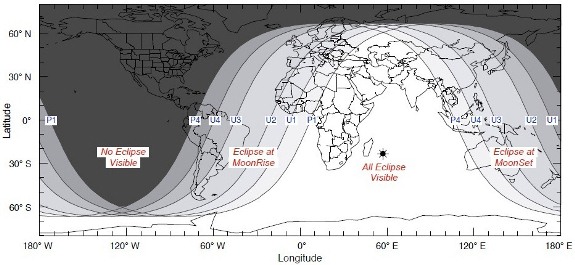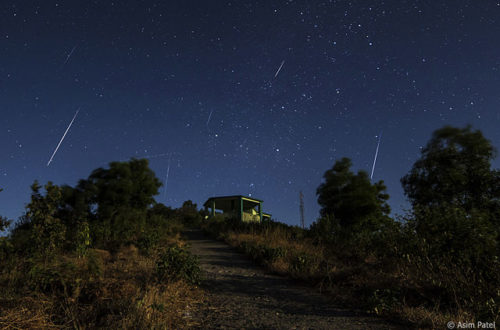Monthly Stargazing Calendar for June 2011
Featured astronomical event
Total Lunar Eclipse: On June 15 there will be a total lunar eclipse which will be visible throughout most of South America, Europe, Africa, Asia, and Australia. Unfortunately it will not be visible in North America.

Would you like to be notified of stargazing events?
Here is a map with the exact areas where the lunar eclipse can be witnessed:

For more information about the lunar eclipse visit: NASA Map and Eclipse Information
Other events
Partial Solar Eclipse: On June 1 there was a partial eclipse visible in most parts eastern Asia, Alaska, northern Canada, and Greenland. For more information visit: NASA Map and Eclipse Information
June Solstice: On June 21 the solstice will occur at 17:16 UTC. The North Pole of the Earth will be tilted toward the Sun, which will have reached its northernmost position in the sky and will be directly over the Tropic of Cancer at 23.44 degrees north latitude. This event marks the first day of summer (summer solstice) in the northern hemisphere and the first day of winter (winter solstice) in the southern hemisphere.
Moon phases
As you know, the Moon has a big impact on the visibility of celestial bodies in the night sky. So here are the Moon’s phases for this month:

Positions of the planets this month
Mercury: The closest planet to the Sun can be seen at dawn and dusk within the constellation of Taurus not far from the bright star Aldebaran. The planets Venus and Mars can also be seen nearby. This planet, being the closest to the Sun, will appear to move quickly in the night sky and it’s position will change in the following weeks.
Venus: The sister planet can be seen within the constellations of Taurus. Just like Mercury, the planet can only be seen at dawn and dusk.
Mars: The red planet can be seen between the constellations of Taurus and Cetus.
Jupiter: The gas giant is visible at the edge of the Pisces constellation. Jupiter can easily be spotted with the naked eye, even in highly illuminated cities.
Saturn: The ringed giant can be seen with the naked eye in the middle of the Virgo constellation, not far from the bright star Spica.
Uranus: The gas giant can be seen between the constellations of Pisces and Cetus with the use of a telescope.
Neptune: The blue giant requires a telescope pointed in the constellation of Aquarius in order to be seen.
Astronomical events next month
- July 1 – Partial Solar Eclipse.
- July 28, 29 – Southern Delta Aquarids Meteor Shower.
See also:
- Previous month’s calendar: [Hiatus] Stargazing Calendar for April 2011
- Next month’s calendar: Stargazing Calendar for July 2011
Would you like to receive similar articles by email?





